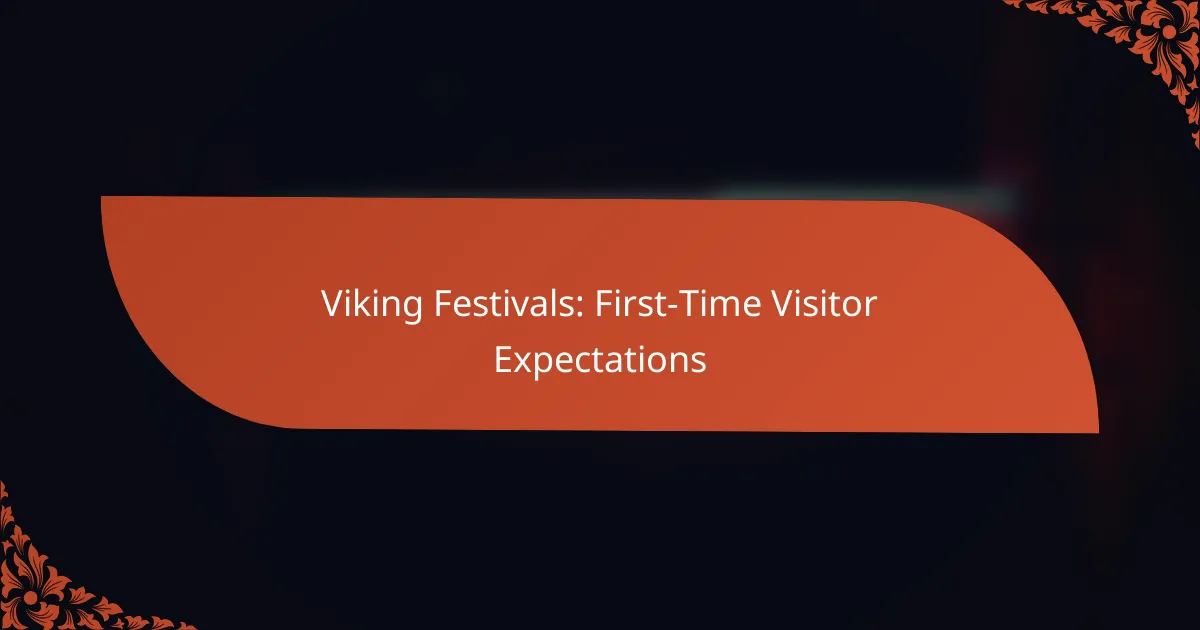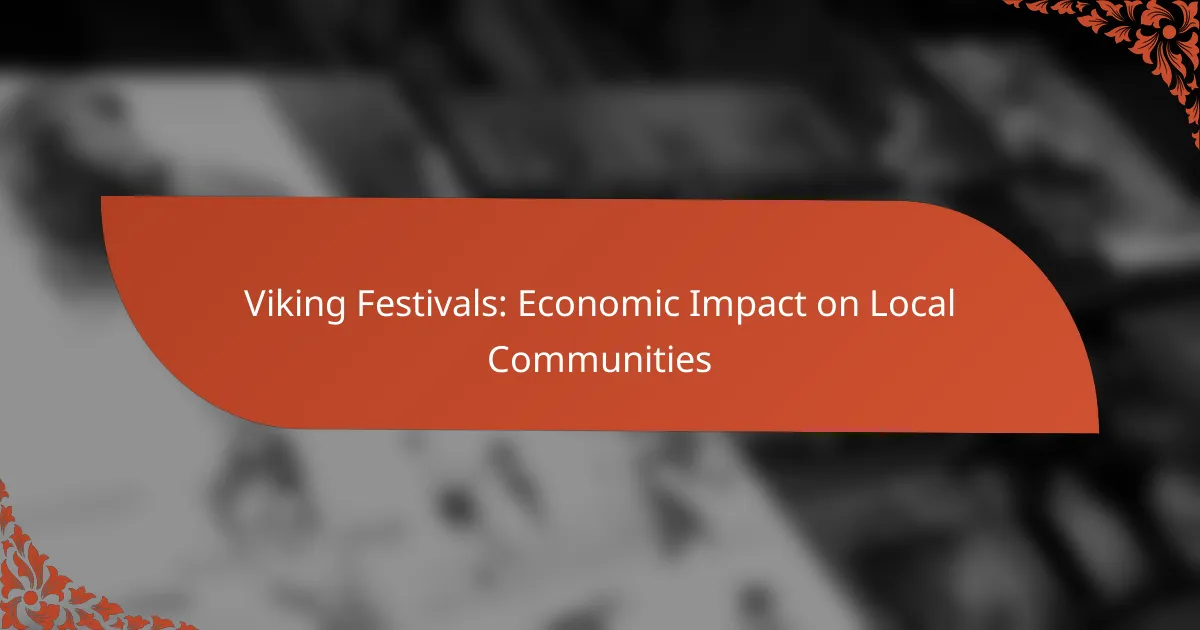First-time visitors to Viking festivals in Scandinavia can expect an exciting and immersive celebration of Norse culture, complete with reenactments, traditional crafts, and vibrant performances. To make the most of your experience, it’s essential to familiarize yourself with the festival schedule, pack appropriate clothing, and understand the local etiquette. Notable events in 2024 include the Jorvik Viking Festival in York and the Viking Festival in Ribe, each offering unique insights into the rich history and artistry of the Viking Age.
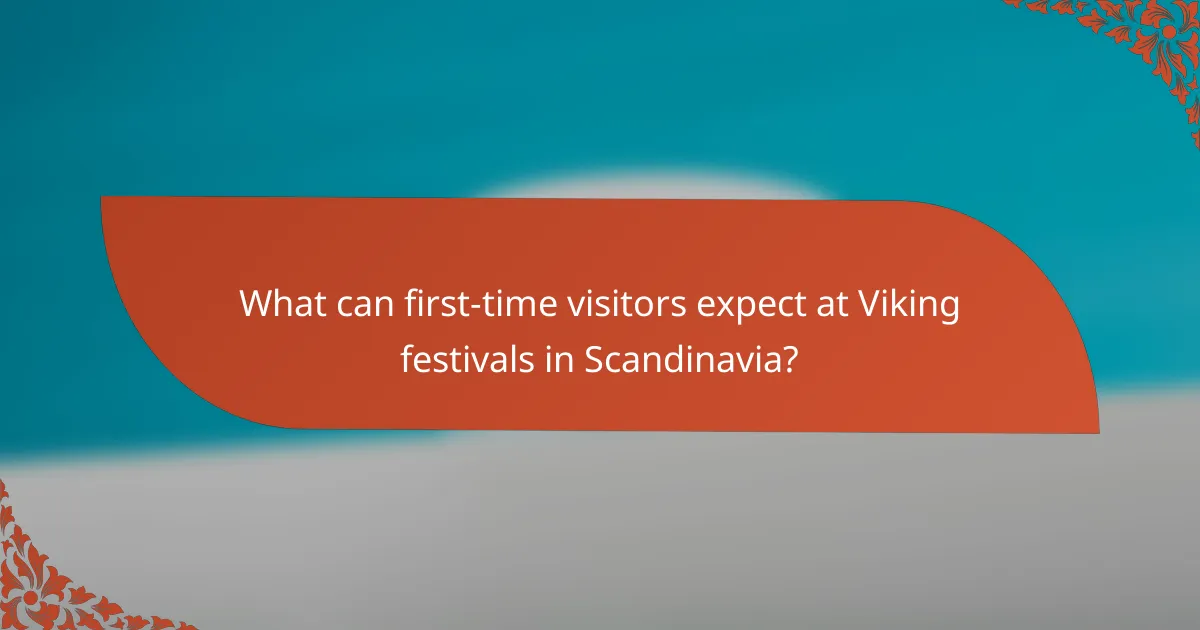
What can first-time visitors expect at Viking festivals in Scandinavia?
First-time visitors to Viking festivals in Scandinavia can anticipate a vibrant celebration of Norse culture, featuring reenactments, traditional crafts, and lively performances. These festivals offer an immersive experience that showcases the history, art, and culinary delights of the Viking Age.
Authentic Viking reenactments
Viking festivals often include authentic reenactments that bring history to life. Participants dress in period-appropriate attire and engage in simulated battles, showcasing traditional combat techniques and strategies. Visitors can watch these performances up close, providing a unique opportunity to learn about Viking warfare and community life.
Some festivals may also feature storytelling sessions where reenactors share tales of Norse mythology and legendary figures. This adds depth to the experience, allowing attendees to connect with the cultural heritage of the Vikings.
Traditional crafts and workshops
Craftsmanship is a key element of Viking festivals, with many events offering workshops where visitors can try their hand at traditional skills. Activities may include blacksmithing, weaving, and pottery, often led by skilled artisans. These hands-on experiences allow participants to appreciate the craftsmanship that defined Viking society.
Additionally, vendors typically sell handmade crafts, such as jewelry and clothing, providing a chance to take home a piece of Viking culture. Engaging with artisans can also offer insights into the historical significance of these crafts.
Live music and performances
Live music is a staple at Viking festivals, featuring traditional Scandinavian instruments and folk songs. Performers often play music that reflects the Viking spirit, creating an energetic atmosphere that encourages dancing and celebration. Visitors can enjoy both contemporary interpretations and authentic historical music.
Some festivals may also include theatrical performances that depict Viking sagas or folklore, enhancing the cultural experience. These performances often engage the audience, making them a highlight of the festival.
Food and drink experiences
Food plays a significant role in Viking festivals, with many offering traditional dishes inspired by historical recipes. Visitors can sample items such as smoked fish, roasted meats, and hearty stews, often accompanied by locally brewed beverages like mead or craft beer. This culinary experience provides a taste of the Viking diet and hospitality.
Food stalls typically emphasize local ingredients, allowing attendees to enjoy authentic flavors while supporting regional producers. Be sure to try specialties unique to the area, as each festival may highlight different culinary traditions.
Family-friendly activities
Viking festivals are designed to be family-friendly, offering a variety of activities for all ages. Children can participate in games, crafts, and storytelling sessions that engage their imagination and curiosity about Viking life. Many festivals also feature designated play areas with activities tailored to younger visitors.
Interactive exhibits, such as mock archaeological digs or animal encounters, can further enrich the experience for families. These activities not only entertain but also educate children about the Viking era in an enjoyable way.
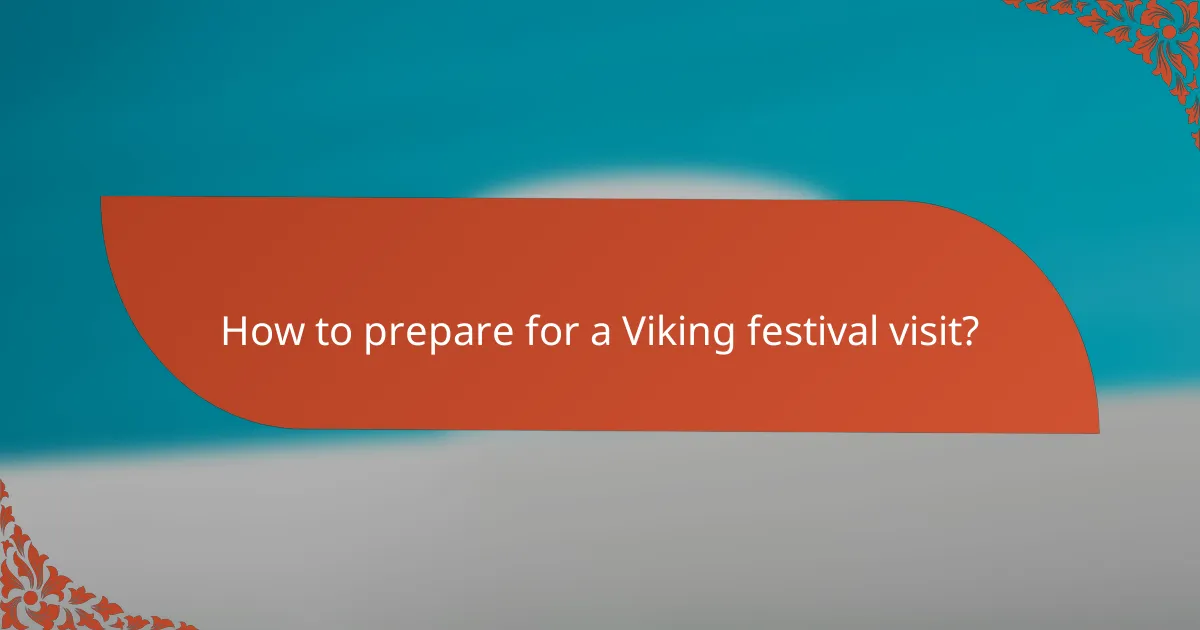
How to prepare for a Viking festival visit?
To prepare for a Viking festival visit, familiarize yourself with the event’s schedule, pack suitable clothing, arrange accommodations, and learn about the festival’s etiquette. These steps will enhance your experience and ensure you enjoy the festivities to the fullest.
Research festival schedules
Understanding the festival schedule is crucial for maximizing your visit. Check the official website or social media pages for dates, times, and specific events, as many festivals feature parades, reenactments, and workshops that occur at different times.
Many Viking festivals span several days, so consider attending multiple events. Look for highlights like competitions, performances, and food tastings that may require advance tickets or reservations.
Pack appropriate clothing
Dress in layers to accommodate varying weather conditions, especially if the festival takes place outdoors. Comfortable shoes are essential, as you may be walking or standing for extended periods.
Consider wearing clothing that reflects the Viking theme, such as tunics or cloaks, to immerse yourself in the experience. However, prioritize practicality and comfort over authenticity to ensure you enjoy the festivities without discomfort.
Plan for local accommodations
Book accommodations in advance, as Viking festivals can attract large crowds, leading to limited availability. Look for hotels, hostels, or campsites near the festival site to minimize travel time.
Consider options that offer flexible cancellation policies, especially if your plans may change. Research local amenities and transportation options to ensure a smooth stay during the festival.
Understand festival etiquette
Familiarize yourself with the festival’s etiquette to show respect for the culture and fellow attendees. This may include understanding the significance of certain rituals or ceremonies and participating in them appropriately.
Be mindful of personal space and noise levels, especially during performances or reenactments. Engaging with vendors and performers respectfully can enhance your experience and foster a positive atmosphere at the festival.
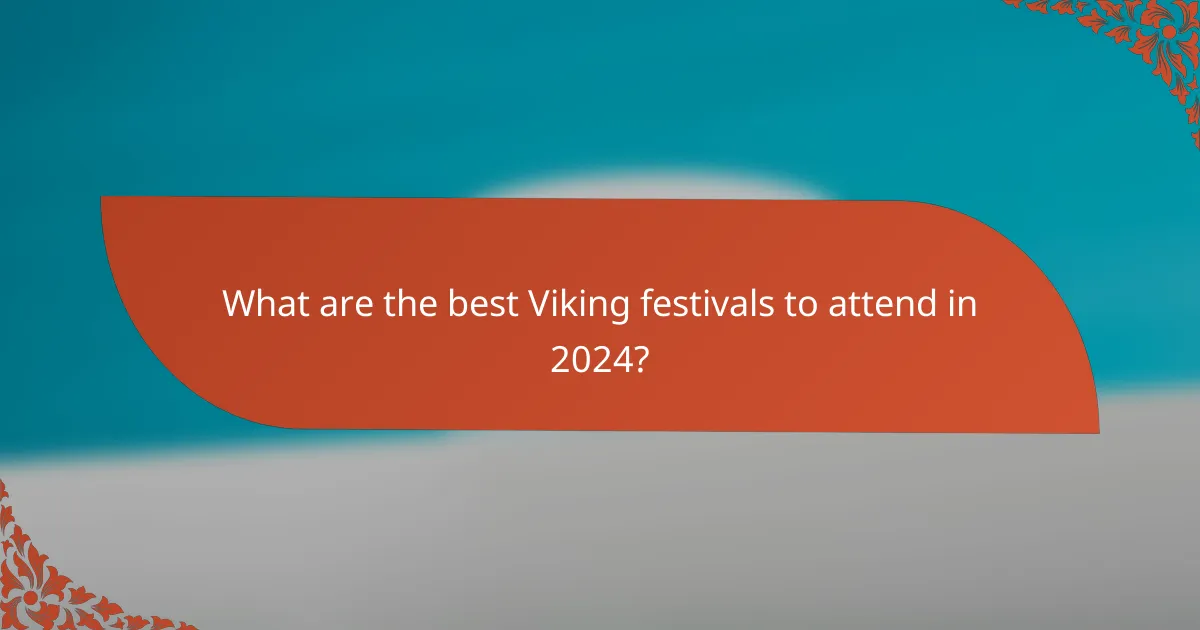
What are the best Viking festivals to attend in 2024?
In 2024, some of the best Viking festivals include the Jorvik Viking Festival in York, the Viking Festival in Ribe, Denmark, and the Stockholm Medieval Week in Sweden. Each festival offers unique experiences, showcasing Viking culture through reenactments, crafts, and entertainment.
Jorvik Viking Festival in York
The Jorvik Viking Festival, held annually in February, is one of the largest Viking festivals in the UK. Visitors can expect a variety of activities, including historical reenactments, workshops, and a vibrant market featuring Viking-themed goods.
To make the most of your visit, consider booking tickets in advance, as popular events can sell out quickly. Additionally, explore the Jorvik Viking Centre to gain deeper insights into Viking history and culture.
Viking Festival in Ribe, Denmark
The Viking Festival in Ribe takes place in the summer, typically in early August, and celebrates Denmark’s Viking heritage. This festival features live demonstrations of traditional crafts, music, and combat, providing an immersive experience.
Visitors should plan to arrive early to enjoy the full range of activities and consider participating in workshops to learn skills like pottery or weapon crafting. The picturesque town of Ribe itself is worth exploring, with its charming streets and historical sites.
Stockholm Medieval Week in Sweden
Stockholm Medieval Week, occurring in August, includes a significant focus on Viking culture alongside medieval themes. The festival features parades, markets, and performances that bring history to life.
Attendees should dress in period-appropriate attire for a more engaging experience and take advantage of the various food stalls offering traditional Swedish and Viking-inspired dishes. The event is family-friendly, making it a great option for visitors of all ages.
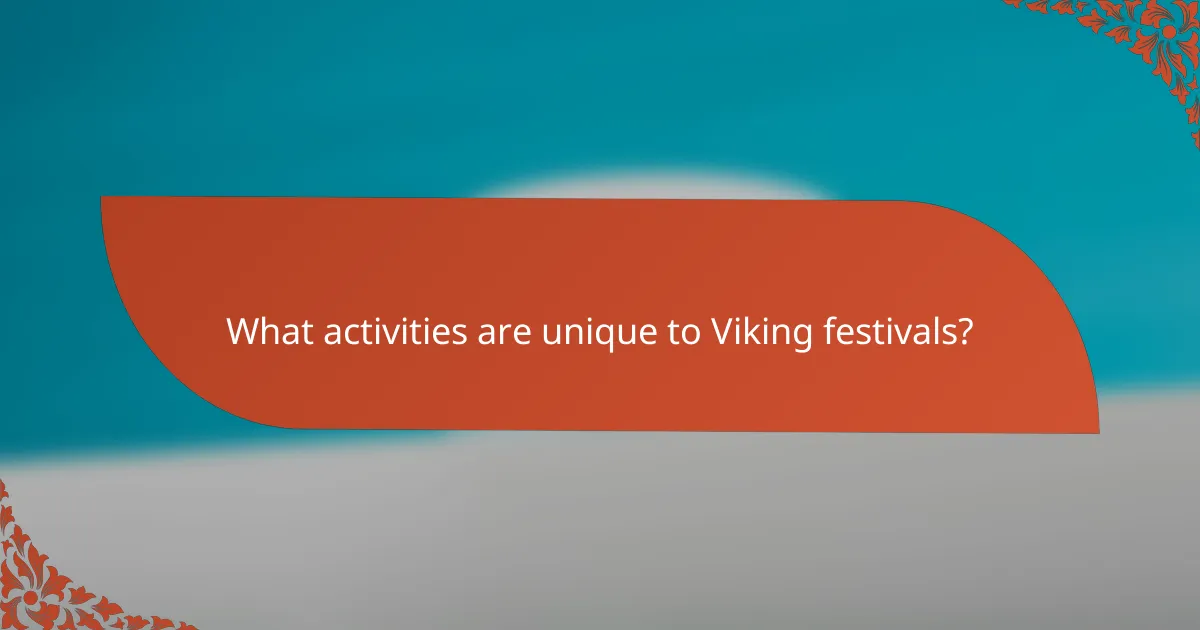
What activities are unique to Viking festivals?
Viking festivals offer a variety of unique activities that immerse visitors in Norse culture and history. From sailing on traditional longships to experiencing battle reenactments, these events provide a hands-on approach to learning about the Viking way of life.
Longship sailing experiences
Longship sailing experiences allow festival-goers to step aboard replicas of the iconic Viking ships. Participants can learn about the shipbuilding techniques and navigation methods used by the Vikings while enjoying the scenic waters of the region.
These experiences typically last from one to several hours, depending on the festival. It’s advisable to wear comfortable clothing and bring a light jacket, as conditions on the water can change quickly.
Viking battle reenactments
Viking battle reenactments bring history to life by showcasing the combat techniques and tactics used by the Norse warriors. These performances often feature skilled actors in authentic costumes, demonstrating sword fighting, shield formations, and battle strategies.
Visitors can watch these reenactments from designated viewing areas, ensuring a safe experience. It’s common for festivals to include opportunities for audience participation, allowing attendees to learn basic fighting techniques under supervision.
Traditional food tastings
Traditional food tastings at Viking festivals offer a chance to sample dishes inspired by ancient Norse cuisine. Common offerings include roasted meats, hearty stews, and various breads, often accompanied by local beverages like mead or ale.
Many festivals feature food stalls or communal feasts, where visitors can enjoy meals together. Be sure to check for any dietary restrictions or preferences, as some dishes may contain common allergens.
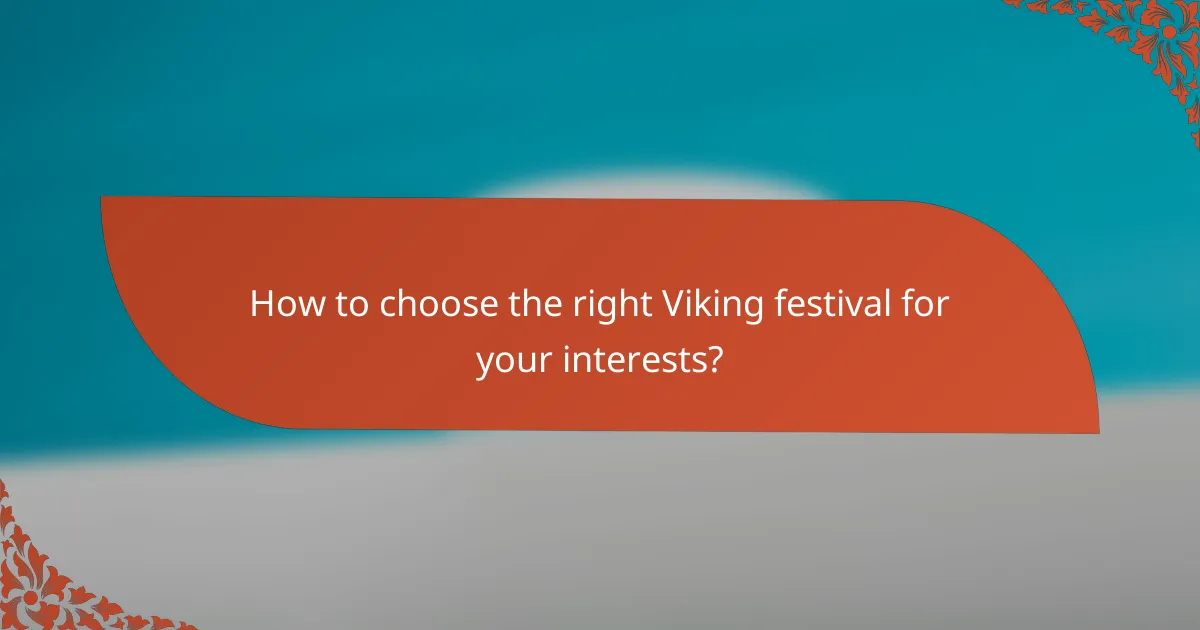
How to choose the right Viking festival for your interests?
Selecting the right Viking festival involves considering your personal interests, the festival’s themes, and its accessibility. Understanding these factors will help ensure an enjoyable experience that aligns with what you want to see and do.
Consider festival themes
Viking festivals often revolve around specific themes such as historical reenactments, crafts, or Norse mythology. For instance, some festivals may focus on traditional Viking combat demonstrations, while others might emphasize storytelling or music. Identifying your interests will help narrow down your options.
Look for festivals that offer activities and displays that resonate with you. If you are particularly interested in Viking crafts, seek out events that feature workshops or artisan markets. This way, you can engage with the culture in a hands-on manner.
Evaluate location and accessibility
The location of a Viking festival can significantly impact your experience. Consider whether the festival is held in a historical site, a city center, or a rural area. Accessibility is also crucial; check for public transport options, parking availability, and accommodations nearby.
For example, festivals in major cities might offer more amenities but could be crowded, while those in rural settings may provide a more immersive experience. Weigh these factors against your comfort and convenience preferences when choosing a festival.
Check for family-friendly options
If you plan to attend a Viking festival with children, it’s essential to verify that the event is family-friendly. Many festivals offer activities specifically designed for younger audiences, such as interactive workshops, games, and storytelling sessions.
Look for festivals that provide a balanced mix of entertainment and educational opportunities for all ages. This ensures that everyone in your group can enjoy the experience without feeling left out or overwhelmed.






